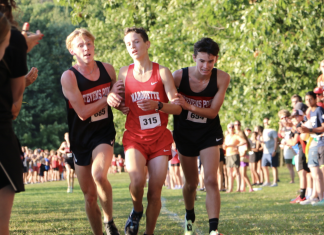The Religious Studies Department at the University of Virginia issued an open letter about the events in Charlottesville a week ago, mentioning that, while the faculty of the department follow several different faith traditions and political leanings, they “stand united in our unanimous and unequivocal condemnation of those who promote hate, by way of violent speech and action—the white supremacists, the neo-Nazis, the neo-Fascists, the anti-Semites. And we regard this condemnation as the expression of a simple, moral truth rather than a political statement.”
The letter was reported in the Chronicle of Higher Education, which also noted the refusal on the part of three different universities following the violence in Charlottesville to grant permits for similar white supremacist marches: Texas A&M, the University of Florida, and just yesterday, Michigan State University.
Prominent white nationalist Richard Spencer was expected to speak at the Michigan State rally, and all three universities said, in refusing his permit, that they remained committed to protecting freedom of expression. Unfortunately, the violence in Virginia had changed how they have to balance that constitutional right against keeping their students, faculty, property, and the general public safe on their campuses.
Michigan State’s refusal was independently reported in the Lansing State Journal. “This decision was made due to significant concerns about public safety in the wake of the tragic violence in Charlottesville last weekend,” the university’s statement said. “While we remain firm in our commitment to freedom of expression, our first obligation is to the safety and security of our students and our community.”
At least we can agree on that! Students can’t learn and professors can’t teach properly with a threat of physical harm looming overhead. It’s not the “safe space” request we hear so often but one of actual physical harm that may come to students if white supremacists are allowed to bring their small army of torches and semiautomatic weapons to campus.
Making sense of the rise of populism

Some people compare the rise of Donald Trump with that of Indian Prime Minister Narendra Modi (Twitter).
Both President Donald Trump in 2016 and Indian Prime Minister Narendra Modi in 2014 “had polarized voters in their respective countries along religious and ethnic lines,” wrote Nalini R Mohanty in First Post.com a few days after the US election. In the US, Mr Trump gained the vote of some white Christians sickened by threats from radicalized Muslim immigrants and of low-income whites sickened by jobs lost to illegal Mexican immigrants (neither of which are completely accurate), while Mr Modi won the votes of Hindus by making a pledge to end “pseudo-secularist” practices in India’s government (also not completely accurate).
In many respects, Mr Modi was a pioneer in right-wing nationalism who also garnered strong support from a religious community in his home country, wrote Sunny Hundal in The Independent about five months ago and less than two months into the Trump presidency:
Narendra Modi, like most populists, conducts politics as an act of constant war, not a matter of administration. He is hyperactive—constantly dreaming up new slogans and initiatives … But the primary weapon Modi deploys to polarize his audience and stun opponents is stoking up religious tension.
As the University of Virginia struggles to bring together different political viewpoints, as well as different religious faith traditions, races, socioeconomic statuses, backgrounds, cultures, and even versions of past events, we learn what makes America such a beacon of hope to the rest of the world.
It is, in fact, our many differences that make us that beacon. Take schools, for example: One of the contributing factors to the US being in the middle of the pack on international math or science benchmark tests is that we have such a diversity of kids in this country, with different opinions about not only science but education in general. It gets more complicated, though, when actual physical protection comes into the mix and we start waving guns and torches when we talk just for the sake of being able to talk.
But simple expression has never until now been the point of the First Amendment’s free speech clause. Free speech is about engaging in debate with people from different perspectives, about moving toward a consensus with respectful listening and talking from several different viewpoints. When one group brings a gun (and a car) to the debate, it’s not really a debate, so it’s not free speech.
Ne donnez pas un coup de pied à un cheval mort.
Yet one side in this debate shuts down the debate by brandishing weapons. That is not—repeat, not—free speech; it is terrorism. My ultimate view on the white supremacists’ message is that we have heard it, this great nation has raised up arms to defeat it, losing hundreds of thousands of lives in the process, and with that action and those words, we have come to the consensus that white supremacy isn’t what we want this country to be. Continuing to beat this dead horse doesn’t change what we have spoken as a nation.















